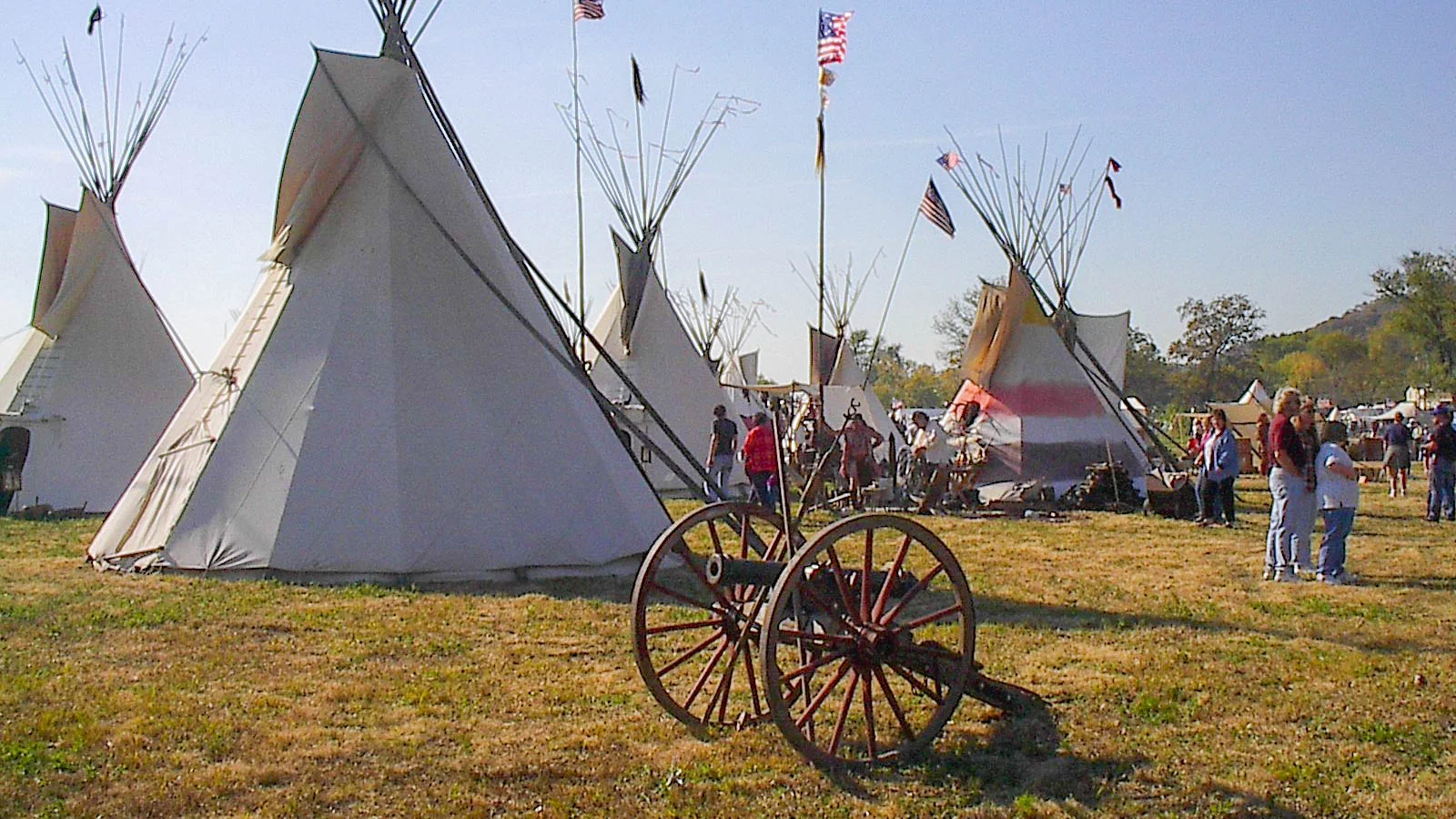DETAILS OF THIS EVENT
HAVE NOT BEEN CONFIRMED
The Piasa Free Trappers Rendezvous celebrates the French Fur Trading era which began after Louis Joliet and Jacques Marquette journeyed through the area in 1673 and ended around 1838. The fur trade was the primary reason for the exploration of the American frontier and this enterprise was spurred on by the demand for pelts which were used to make the very expensive and extremely popular felt hats that were fashionable in Europe from 1550 to 1850. The fur trade began to decline when Europeans began to prefer silk hats and the beaver population began to decline. Although its influence isn’t directly apparent, the fur trade had a profound effect on the growth of the European influence on North America. Routes trail blazed by fur trappers became the routes followed by the pioneers and fur trading outposts like St. Louis became cities.
The Rendezvous, adapted from the French word for a date or appointment, was the event of the year for the fur trappers who would come out of the hills and forests every summer with the furs they had collected throughout the year. Coordinated by the fur trading companies, the Rendezvous was a specified time and place where the trappers would meet with the fur trading monopolies and traders of other goods. It was at the Rendezvous that fur traders would sell or get paid for the furs they collected throughout the year and buy the necessary supplies and luxuries such as gunpowder, lead, new animal traps, tobacco, cloth, and coffee for the coming year. A rendezvous was also a long raucous affair, lasting up to a month, that was a continuous celebration that involved drinking, eating, gambling, carousing with women, and competitions that involved shooting, wrestling, racing, and fighting.
Today a rendezvous is a gathering of people interested in reliving the history of the fur trade era. Teepees, tents, campfires, and costumed living history reenactors adopt personas and carry on the day-to-day lifestyle as it would have been done 200 years ago. Medicine Woman and Skunk Face (aka Donna and Larry Denman of Hazelwood, MO have been participating in these types of gatherings for years and like the camaraderie and the sense of family and friendship that comes from seeing the same people year after year. They also like the unstructured atmosphere and the individualism that exists at a rendezvous compared to other types of Living History events. Participants at a rendezvous portray a range of characters including fur trappers, mountain men, Native Americans, settlers, and merchants.
Donna also likes taking history out of the text books and classrooms. Many of the participants enjoy the opportunity of illustrating and sharing the knowledge they have gained in researching their personas. Donna and Larry live in a teepee during the event and theirs is one of a large variety of primitive shelters that can be found at a typical rendezvous. Donna keeps hers open and invites those that are interested to check out the inside. The teepee and its cousins - the pyramid and the lean pee - are common sights at a rendezvous. A true teepee has a minimum of 17 poles, a pyramid has 1 pole supporting the center, and a lean pee uses several poles and is tilted towards one side. The most primitive shelter that can be seen is the diamond, which is basically a square piece of material staked down at three corners and propped up by a short pole, usually a canoe oar. This type of shelter was favored by those who were on the move. As more settlers ventured west they brought with them canvas which proved more durable than hides. They also brought different styles of portable shelters including the A-frame, the wall tent, and the marquee. The marquee tent and its variations proved popular with merchants due to the increased interior space its design provided. According to Larry, there is a trade off between comfort and work when choosing a type of shelter. The larger and more comfortable the shelter, the harder it is erect and take down.
Each rendezvous has its own set of rules governing what can be portrayed at the event with some having very exacting standards as to what type of shelters can be used and what types of personas can be portrayed. Although pre-1840's dress is required, the Piasa Free Trappers Rendezvous doesn’t have a strict "dress code" and this allows for demonstrations such as bead making by John Mefford of Granite, IL. In this demonstration he recreates the making of wampum belts that were used primarily by eastern Native American tribes such as the Iroquois and Huron. These belts, made by beads fashioned from quahog clam shells, were used to record treaties and grant authority. Mefford displays several handmade recreations including the Covenant Chain between the Iroquois and the English, and belts given by the Huron to the Jesuit Church and to the Frenchman Samuel Champlain. Although wampum belts weren’t common in the Middle Mississippi region, the increased manufacture of beads in the East after European contact caused the trade of these beads to reach as far as the Great Plains.
The Piasa Free Trappers Rendezvous is a great place to either participate in the activities or just to experience some of America’s past firsthand. There are plenty of demonstrators, activities, period traders and merchants, and good old fashioned food to go around. If you have any questions about anything you see, just ask one of the reenactors. They have spent much time researching their persona, and most are happy to share what they know. The Grafton Rendezvous on the banks of the Illinois River
Times: 10 am - 4 pm daily
Free
For more information visit the event’s Facebook page.














